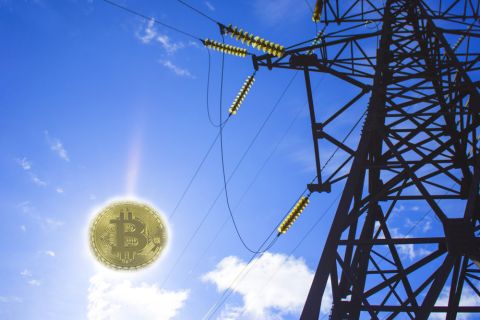Presented by:

This article appears in the E&P newsletter. Subscribe to the E&P newsletter here.
The E&P editors and staff proudly present the winners of the 2021 Special Meritorious Awards for Engineering Innovation (MEAs), which recognize service and operating companies for excellence and achievement in every segment of the upstream petroleum industry. The following technology showcase highlights 20 winners picked by an independent team of judges.
The winning technologies represent a broad range of disciplines and address several challenges that pose roadblocks to efficient operations. Winners of each category are products that provided monumental changes in their sectors and represented techniques and technologies that are most likely to improve artificial lift, carbon management, digitalization, drill bits, drilling fluids/stimulation, drilling systems, exploration/geoscience, formation evaluation, HSE, hydraulic fracturing/pressure pumping, IOR/EOR/remediation, nonfracturing completions, onshore rigs, subsea systems and water management.
This year some of the brightest minds in the industry from service and operating companies entered exceptionally innovative products and technologies that have now been measured against the world’s best to be distinguished as the most groundbreaking in concept, design and application.
The awards program recognizes new products and technologies designed by companies and people who understand the need for newer, better and constantly changing technological innovation to appease the energy-hungry world.
The panel of judges comprised experts in business, engineering and the sciences representing operating and consulting companies worldwide. Each judge was assigned a category that best utilized his or her area of expertise. Judges whose companies have a business interest were excluded from participation.
E&P would like to thank these distinguished judges for their efforts in selecting the winners in this year’s competition.
- R G Bailey, Chairman and Interim CEO, Petroteq Energy
- Abby Ballard, Senior Data Engineer, Validus Energy
- Jack Blears, Director, E&P Technology Research, Darcy Partners
- John R. Durand, President and Chief Sustainability Officer, XRI Water
- David Johnston, Managing Director, Differential Seismic LLC
- Peter Lovie, Consultant
- Emeakpo Ojonah, Wireline Logging Expert, Energy Quest
- Ian Dexter Palmer, Consultant, Higgs-Palmer Technologies
- Brent Smith, Owner, Seawater Technologies LLC; and Petroleum Engineering Consultant, Gaffney, Cline & Associates
- Tyler Thomason, Vice President of Operations, EnCore Permian Operating LLC
- Blake Thomson, Product Manager, Strategy & Insights, DataRobot
- John Thorogood, Consultant, Drilling Global Consultant LLP
- Nancy Zakhour, Well Design Lead, Occidental

ARTIFICIAL LIFT CATEGORY:
ForeSite Edge, Weatherford
Weatherford ForeSite Edge is an artificial lift automation technology that optimizes oil and gas production and involves field personnel only when necessary. It does this by incorporating industry 4.0 concepts, such as artificial intelligence, Internet of Things (IoT) infrastructure and edge computing.

Delivering and analyzing data at the edge of the production ecosystem (i.e., the well site) enables continuous real-time, data-driven production optimization. This intelligent optimization technology harnesses the power of Weatherford ForeSite and CygNet IoT platforms and places these capabilities at the well site—also known as on the edge. Installed as a standalone automation device or paired with existing automation equipment from any major manufacturer, ForeSite Edge manages well optimization without human input, sends instantaneous alerts, and locally stores and pushes real-time, high-frequency data through Google cloud or an on-premise IoT network. Together, these capabilities significantly boost asset profitability, productivity and uptime.
ForeSite Edge creates an intelligent well that autonomously adjusts lift settings, performs well diagnostics and instantaneously calls for human intervention when a problem arises. Through real-time high-frequency data with engineering-model analysis, ForeSite Edge autonomously determines and enacts the optimal settings for everyday set points, such as pump idle time and gas-injection rates. The device can adjust these settings as needed per stroke or second, which reduces downtime, improves meantime between failures (MTBFs) and maximizes artificial lift uptime and production. With real-time data availability, operators can better understand well behavior and make informed decisions that improve production, extend MTBFs and reduce nonproductive time for wells and nearby assets.
CARBON MANAGEMENT CATEGORY:
EcoCell, Patterson-UTI
The EcoCell hybrid battery system is an energy management technology that leverages battery-stored energy to optimize fuel efficiency and reduce emissions. The system stores more than 500 kW hours of energy and is capable of providing 1.5 times more power than a generator at full load, delivering a sustainable solution in any drilling application regardless of other alternative power infrastructure limitations.
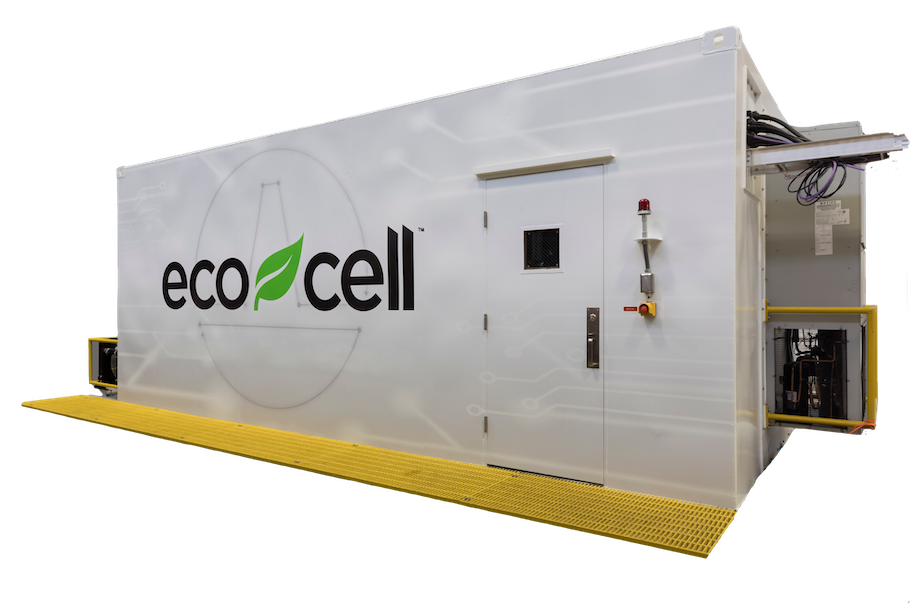
The system is compatible with diesel, dual fuel and natural gas engines, and it is particularly effective when used with dual-fuel engines because its ability to maximize substitution rates dramatically improves diesel consumption. The EcoCell system provides a way to optimize the power provided by their existing prime movers with battery energy storage, significantly reducing greenhouse gases (GHG) and other types of emissions produced during operations. With a typical high-spec land rig consuming 550,000 to 650,000 gallons of fuel per year, the ability to reduce consumption can deliver considerable, quantifiable savings. And for every gallon of fuel saved, there is an associated reduction in GHG emissions and a smaller carbon footprint.
The built-in logic of this fully automated energy management system seamlessly stops and starts engines to maintain optimal load ranges to achieve the best possible fuel economy and emission levels. Because it senses power demand needs, it is particularly useful in crucial drilling situations, providing improved and immediate power to keep engines running optimally to prevent fluctuations in power that could result in dangerous operating conditions. EcoCell also extends the maintenance intervals for the engines onboard because it decreases engine run hours, which reduces engine wear. By efficiently managing fuel allocation and consumption, EcoCell reduces the cost of consumables and improves carbon management, and it also has the potential to reduce capital costs.
DIGITALIZATION CATEGORY:
GumboNet, Data Gumbo
Data Gumbo's industrial blockchain network, GumboNet, connects companies, suppliers and vendors to automate and execute smart contracts across commercial relationships using a validatable, immutable record of truth as the basis for business transactions.
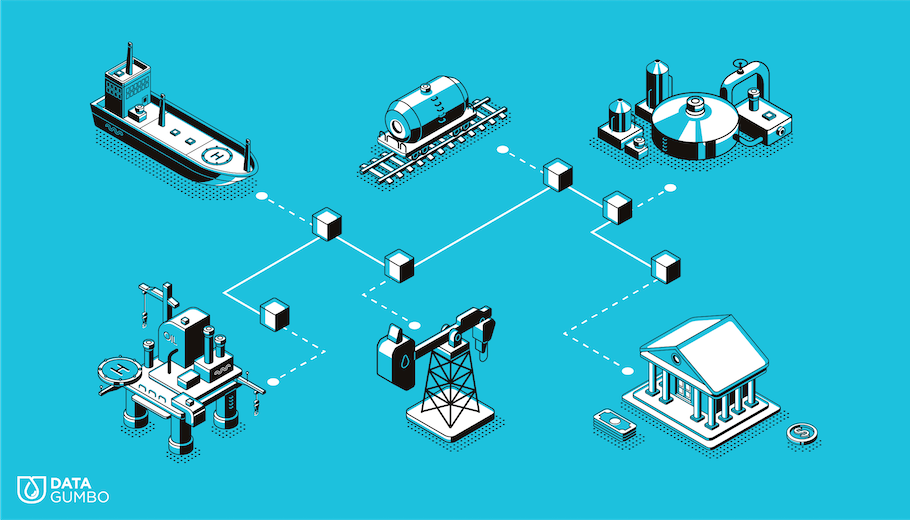
By forging trust between counterparties, Data Gumbo solves challenges surrounding fragmented workflows, managing complex assets and siloed technology systems that result in outrageous DSOs, payment disputes and admin-heavy reconciliations. By radically transforming how companies in oil and gas interact, Data Gumbo frees up working capital, reduces contract leakage, improves real-time cash and financial management, and delivers provenance. GumboNet’s key differentiators include the capability for subscribers to create, configure, negotiate and manage smart contracts that work in tandem with natural language contracts. The network is a purpose-built private, permissioned blockchain with no cryptocurrency, tokens or mining. It operates as a single network of ledgers rather than non-interoperable point solutions, can store massive datasets for complete visibility and auditability, integrate with existing legacy or Industrial Internet of Things data sources, and guarantees interoperability with other subscribers.
Key business values of GumboNet include radical transparency—service providers get paid for exactly what is delivered and buyers pay only for what is measurably delivered—and payment automation taking a typical 90-day invoice process down to as little as two days.
Advanced Diagnostic and Prognostic Technology (ADaPT), PETRONAS
Advanced Diagnostic and Prognostic Technology (ADaPT) offers real-time monitoring and prediction of mechanical damages or cracks using combination of acoustic emission (AE) technology and stochastic prognostic model. The prediction can allow the plant authority to manage their equipment suffered from cracks before it ruptures and causes unplanned shutdown to the facility. The ADaPT Prognostic prediction model is based on the equipment historical data coupled with finite element analysis (FEA)-FFS and probabilistic statistical analysis. It utilizes an FEA model to establish a physics-based predictive model for equipment of interest. During operation, the historical data as well as any changes in future equipment’s operating conditions will be incorporated into the predictive model for real-time prediction of the remaining life span due to crack growth and the cumulative stress/strain limit. The ADaPT diagnostic system is used to validate the prediction model. It employs an AE bespoke data acquisition tool with an integrated data filtering algorithm, and it features analytics for interpretation of induced waveforms signal from field environment. The combined ADaPT diagnostic and prognostic system provides a digital twin technology in which the real-time data from the sensor is fed into the prediction model. The diagnostic system will trigger the information of any damage occurrence to the prediction model, which then updates the current remaining life prediction. Moreover, with the combined system, the remaining life is predicted with a higher confidence level as it is supported by physical evidence/data at real time at 99%.
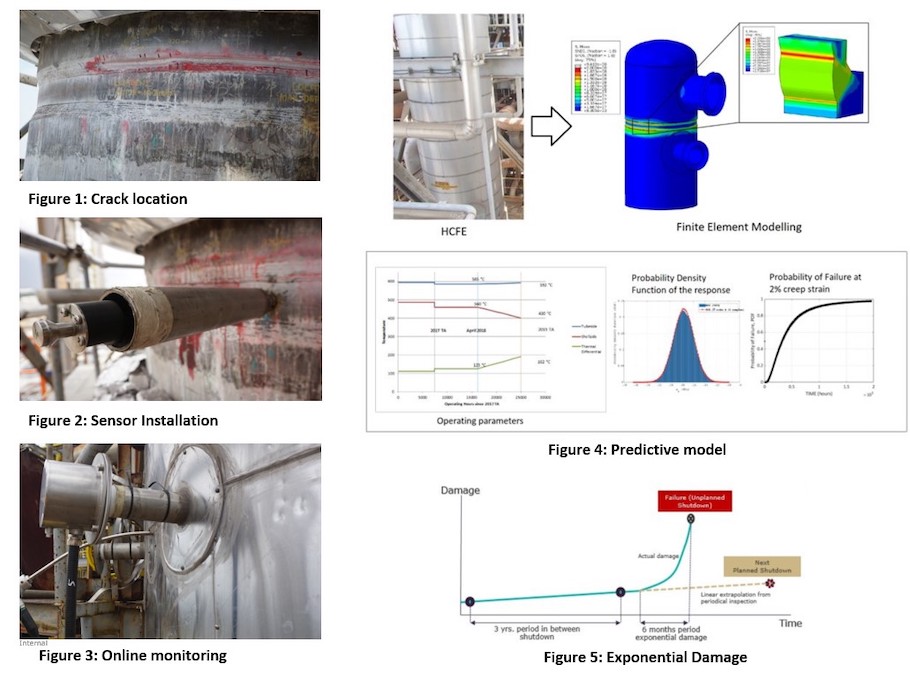
DRILL BITS CATEGORY:
StrataBlade Concave Diamond Element Bits, Smith Bits, a Schlumberger company
Schlumberger's StrataBlade concave diamond element bits improve ROP in a wide range of rock types while withstanding impact damage often associated with drilling interbedded formations. Specifically, they’re a fit-for-purpose solution to cut through layered, medium-strength formations typically ranging from 5,000 to 20,000 psi.
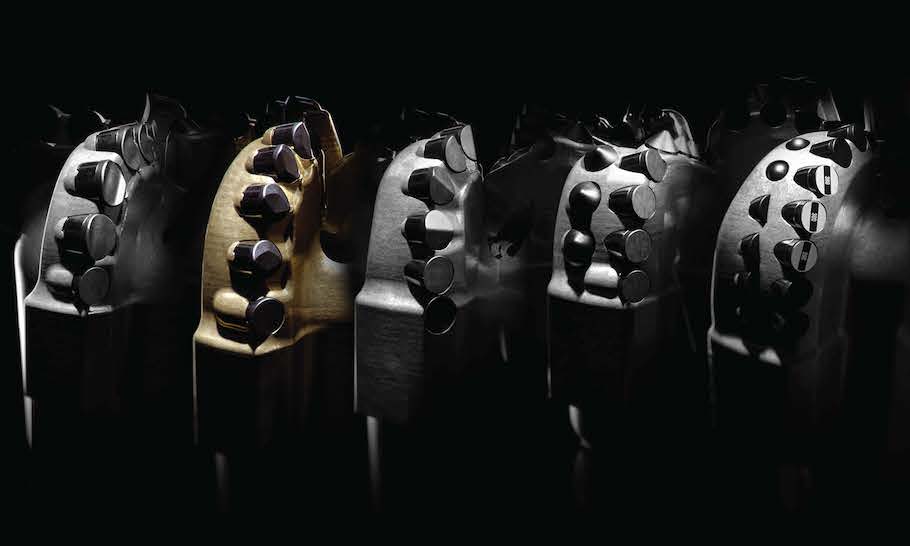
The StrataBlade bits incorporate unique geometry of Strata concave diamond elements across the bit face, which increases cutting efficiency and results in higher instantaneous ROP with the same operating parameters. In deep lateral wells where weight transfer to the bit is a challenge, the StrataBlade bits drill with higher ROP when compared with traditional PDC bits with flat cutters. Improved cutting efficiency also means a better torque response at the bit for superior steerability and conformance to directional plans. The StrataBlade bits increase ROP by up to 35% in medium-strength formations as compared with flat PDC bits, benefitting from the Strata concave diamond cutting elements. Their distinctive concave feature decreases the cutter back-rake angle to cut deeper into rock. It also forms into a tapered geometry with a thicker diamond table that significantly improves cutting efficiency and sustains a higher instantaneous ROP with the same input energy. The tapered ridge tip focuses the bottomhole assembly's energy so the bit pierces farther into the formation layers without increasing weight on bit. The thick diamond layer at the cutting tip and tapered profile toughens the cutter against chipping and breaking.
DRILLING FLUIDS/STIMULATION CATEGORY:
NanoTags, EXPEC ARC, Saudi Aramco
"NanoTagging" is an innovative technology that significantly improves the accuracy of cuttings depth determination to +/- 2 ft in wells that are thousands of feet long. By pumping nanoparticle additives into the drilling mud and tagging the cuttings when generated at the drill bit, the unique barcoded labels on the cuttings correlate to the exact depth of the cutting’s origin in wells that are thousands of feet long with an accuracy of +/- 2 ft. This technology is a unique drilling depth correlation system consisting of 1) barcoded NanoTags, 2) an extraction process and 3) a detection method for precisely and distinctively detecting the tags residing on the drill cuttings. The NanoTagging method injects specially designed nanoparticle “tags” into drilling fluids, which generate a barcode signature upon cuttings analysis that precisely determine the original depth of the drill cuttings precisely.
Saudi Aramco has successfully synthesized a library of polymeric NanoTags using a simple, scalable, flow-to-batch hybrid emulsion polymerization method. Notably, the sizes of the as-made NanoTags are narrowly distributed in the range of 20 nm to 60 nm. These barcoded NanoTags are also proven to be drilling fluid friendly. The NanoTags are safe for handling and disposal due to their low toxicity and long shelf life. Saudi Aramco designed a solvent-extraction and thermal-separation workflow to extract and separate the NanoTags from other small molecule additives and hydrocarbons on the cuttings. The NanoTags are subjected to pyrolysis, which thermally depolymerizes the NanoTags at elevated temperatures for identification by GCMS. The NanoTags for drilling depth correlation technology improves the current mud logging process and is cost-effective, straightforward and environmentally friendly. This technology allows oil and gas operators to improve the quality of lithological and petrophysical analyses, enhance formation evaluation and geosteering practices, and control well placement, thus helping to maximize oil recovery. All of the above advantages can be achieved by injecting only ppm levels of the cost-effective NanoTags into the drilling fluids without any interruption to the drilling operations.
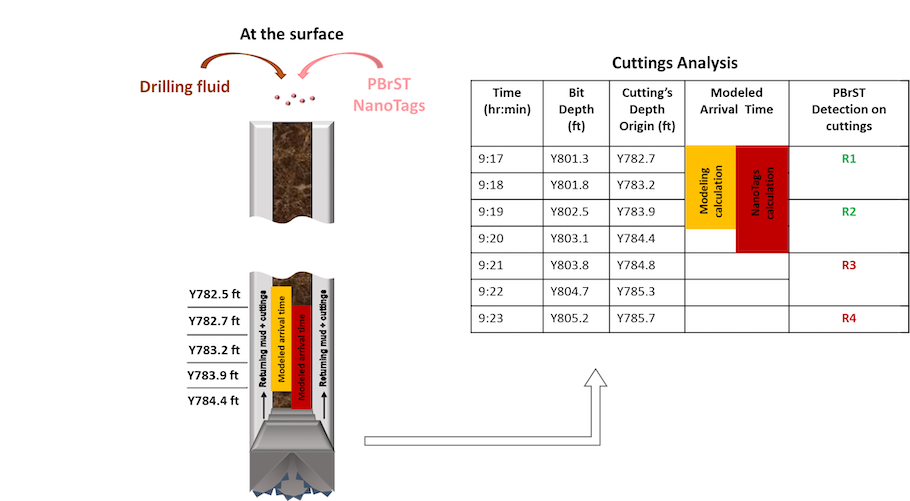
DRILLING SYSTEMS CATEGORY:
Welltec Annular Barrier (WAB), Welltec
An offshore Norway operator was trying to drill three wells from a single well slot: the main horizontal bore and two lateral wells. Once the main horizontal well was completed, the operator wanted to move on to the two lateral wells but was experiencing losses when drilling the main bore. These losses to the main bore were deemed as not acceptable in terms of milling and drilling the laterals from the 9 5/8-inch casing. Prior wells had used swell packers on the liner to stop such losses, but these required 25 days for the swells to achieve sealing—even after that period, satisfactory sealing had not always been achieved and laterals therefore not drilled. On these early wells, the 9 5/8-inch casing was cemented but not sealing. Therefore, it was decided that there would be no cementing on this well.
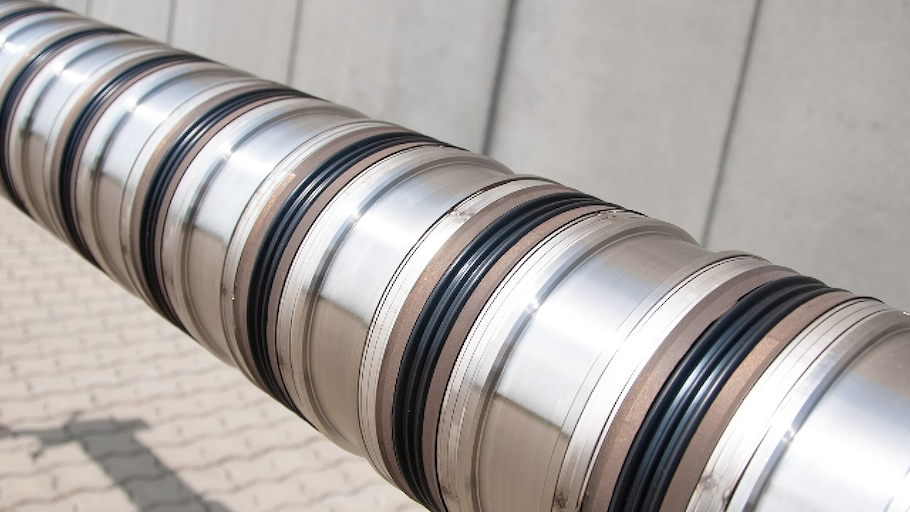
One of the challenges for the main bore was the high-formation permeability, at three to four Darcy. The agreed solution was to deploy Welltec Annular Barrier (WAB) technology to seal against the rock face and divert the mud through the rock, with the aim that the mud with LCM would then reduce the rock permeability and simultaneously build a mud cake. At short notice, the 812WAB was mobilized and deployed, and it hydraulically expanded below the 9 5/8-inch shoe within the main bore. This was successful in achieving good sealing, thereby curing the losses and allowing the rig to progress with the drilling of the first of two laterals. The annular loss rate was resolved, indicating that the WAB packer was successfully sealing and providing annular isolation as planned. This allowed the operator to continue drilling the laterals without waiting on the swell time. More importantly, the laterals could be drilled to maximize the well’s recoverables. Once the main bore had been drilled and the liner deployed, the first lateral window could be milled and the lateral drilled into the depleted reservoir. Once again, no losses were incurred when drilling the lateral due to the 812WAB installed on the main bore. An additional 812WAB was installed as part of the first lateral completion, the purpose of which was to prevent losses when drilling the second lateral. The second window was milled, and the second lateral drilled with no losses incurred due to the two previously installed WABs. This operation represents the first application of WAB technology for the purpose of isolating losses during the drilling of laterals, with the successful installation of two 812 WABs as liner hangers.
EXPLORATION/GEOSCIENCE CATEGORY:
Surface-Consistent Full Waveform Inversion (pQC-FWI), Saudi Aramco
Recent trends in the exploration of land oil and gas resources are targeting low-relief structures and stratigraphic traps. Such targets present marginal structural relevance, often in the range of a few tens of milliseconds in time domain and a few tens of meters in depth domain. The gentle structures can be easily missed or wrongly interpreted (e.g., leading to dry holes) if the near surface variable velocity is not retrieved accurately. Another parallel trend is the merging of large numbers of blocks to interpret low-relief structures and stratigraphic traps over large areas. These two recent developments in exploration trends lead to the necessity of high-resolution velocity models of the near surface through full waveform inversion (FWI) and to the capability of seamlessly analyzing and inverting tens of billions of seismic traces in one go, also considering the continuously growing number of seismic channels. Current seismic processing and inversion frameworks are breaking down when facing such challenges. As a result, daily land production processing for near-surface analysis is still relying on technology developed two to three decades ago that cannot cope with the expected resolution. Saudi Aramco has developed a novel surface-consistent processing framework based on the transmitted portion of the seismic waves (e.g., refractions, diving waves) that enables fully automated pre-conditioning of the seismic data directly from raw gathers to prepare the data for the FWI step. The automatic preconditioning enables surface-consistent phase and amplitude corrections, deconvolution of the viscoelastic near-surface response, with phase and amplitude-preserving signal-to-noise (S/N) enhancement of seismic data through the generation of virtual super gathers (VSG). 1.5D FWI, developed for the purpose, provides robust and high-resolution velocity models of the near surface. The whole process runs automatically on massive seismic datasets totaling several billions of seismic traces. The preconditioned and S/N enhanced seismic data are then fed through a robust FWI process, working in a surface-consistent framework, to derive detailed velocity models of the near surface. The results obtained in this way benefit the successive steps of reflection processing and imaging as well as 3D velocity model building and true amplitude processing for reservoir characterization. Billions of traces are analyzed automatically, providing enormous benefits in the execution time and in the accuracy and robustness of obtained results. The transmission-based surface-consistent framework provides a new paradigm for near-surface analysis. It solves several current and long-standing bottlenecks in depth-domain seismic velocity modeling in near-surface description.
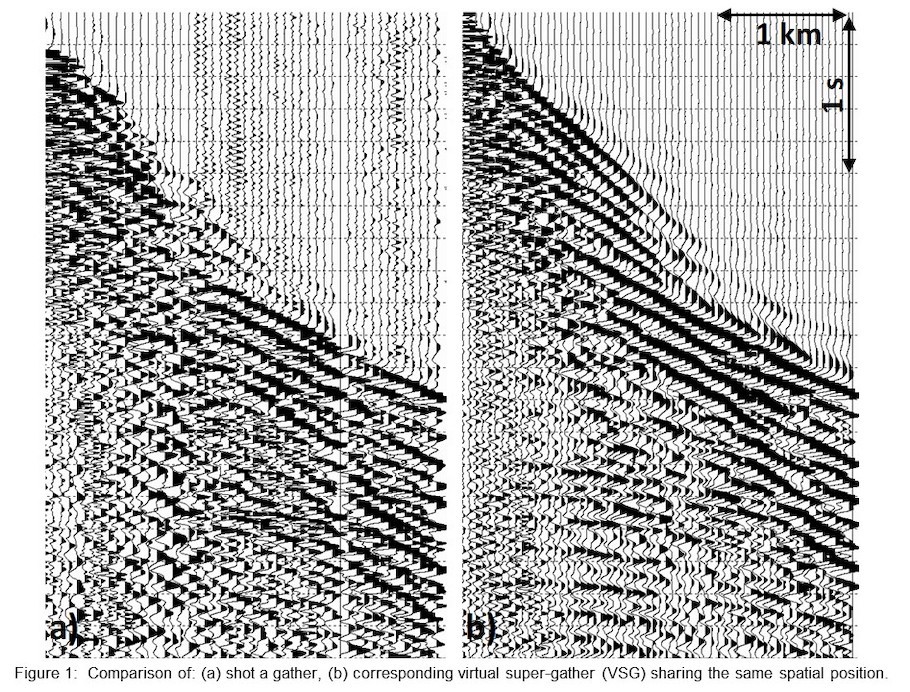
EarthStar 3D ─ Ultra-Deep Resistivity Service for Halliburton Sperry Drilling, Halliburton
Halliburton Sperry’s EarthStar ultradeep resistivity service gives E&P operators more real-time LWD value than ever before. By delivering superior insight into the reservoir, it helps oil and gas exploration projects be successful with geostopping, geosteering and geomapping their wells. EarthStar further enhances subsurface knowledge with the 3D inversion processing technique, an advanced technology that provides real-time visualization of the geology and fluids in place, in 3D, for much higher accuracy in well placement and decision-making. Clearer downhole pictures provide reservoir insights before, during and after the drilling operation, due in large part to the high-measurement quality (derived from electromagnetic wave propagation) that allows for clear delineation of geological features, such as faults and low-contrast or transitional boundaries. This exploration technology illuminates and maps the reservoir using LWD techniques to reveal formation and fluid boundaries around the wellbore over twice the depth of investigation of the previous industry standard. With the ability to map such large volumes of the reservoir, operators can position their wells accurately to maximize production, while evaluating reserves in place for future field development. Formation measurements from the EarthStar service are easily integrated into Halliburton Sperry’s RoxC real-time reservoir modeling tool, with fast calculation speeds and a real-time visualization of the reservoir structure. Geosteering experts can use these measurements to help optimize well placement, reduce wellbore tortuosity and maximize reservoir contact for better drilling outcome. The EarthStar ultradeep resistivity service, combined with advanced 3D inversion processing, is designed to be a step change in geostopping, geosteering and geomapping capabilities that enhance an operator’s toolkit.
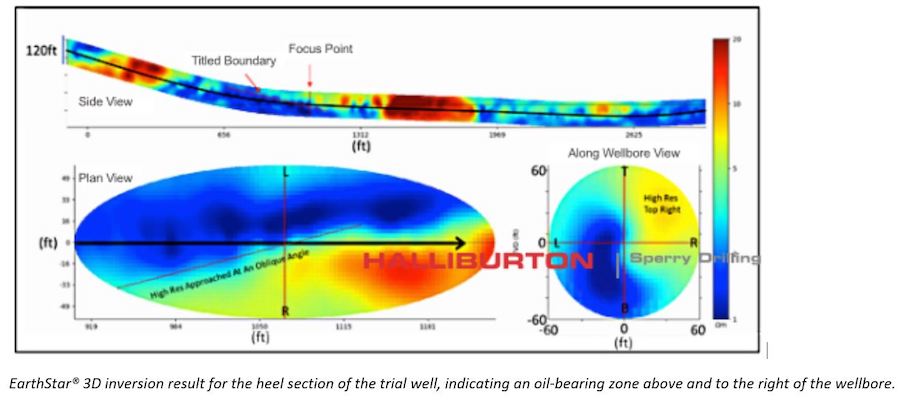
FORMATION EVALUATION CATEGORY:
World Slimmest Tractor for Production Logging & Well Intervention of Extended Reach Wells, Saudi Aramco, Western Well Tools
The paradigm changing availability of a coiled tubing Slim Logging Tractor (SLT) provides a new capability to live-logging long extended-reach (ER) and horizontal wells, including those with restrictive completions.
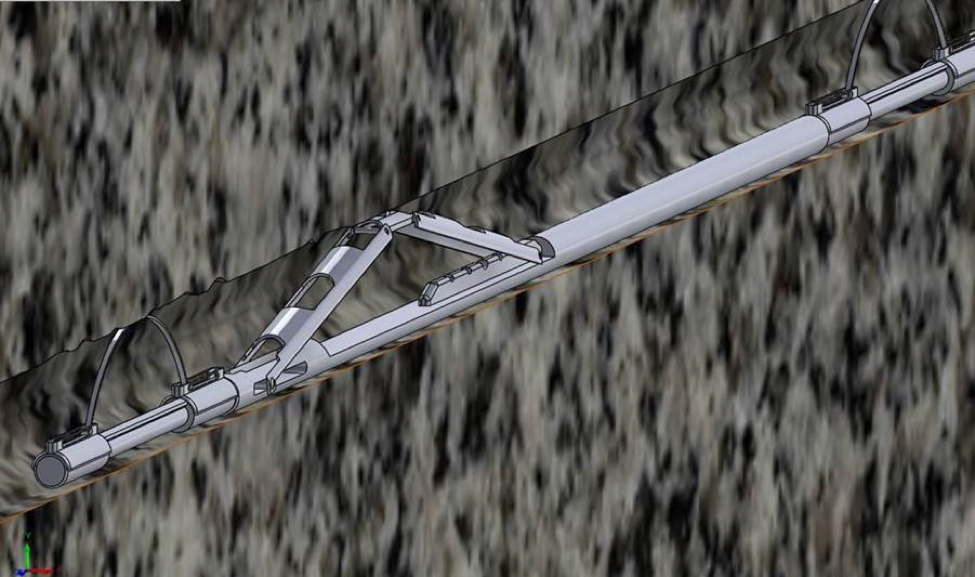
Production logging is essential to determine the distribution of flow along an entire wellbore. Logs are also required for well function diagnosis, identification of stimulation candidates and sidetracks, and other purposes. For longer ER horizontal wells, conveyance of the logging tools is required to achieve these objectives. Previously available conveyance methods of delivering live logging tools are restricted to shorter ER wells because they are ineffective at reaching target depths and/or are excessively expensive. The SLT eliminates the costly process of removing downhole completions necessary with drillpipe conveyance because it operates on coiled tubing (CT). Although some wireline tractors can pass narrow downhole restrictions in a completion, such as electric submersible pump, they have difficulty traversing downhole debris and have low pulling capacity that can prevent reaching total depth. The SLT has two to three times more pulling capacity than wireline alternatives. An existing CT hydraulically operated tractor can pass narrow downhole restrictions and provides adequate CT pulling force; however, it is unable to pass wireline cable and therefore cannot live-log. The SLT allows passage of e-lines to logging tools. Additionally, when compared to wireline tractors, the SLT facilitates logging to depths unachievable by wireline.
HSE CATEGORY:
Off Road Air Breathing System, Saudi Aramco
Employees who work in a field or at a gas and oil plant are susceptible to toxic gases, such as H2S, which causes serious health issues varying from eye and nose irritations at low concentrations to death at high concentrations. Although these plants are equipped with air breathing systems (ABS) in case of H2S or any toxic gases leakage, some work locations are not. Therefore, employees have to wear self-contained breathing apparatus (SCBA) that provides air for a duration of approximately 30 minutes that is insufficient to complete the task. Therefore, the idea of a truck that carries cylinders connected to a mask by a hose was born.
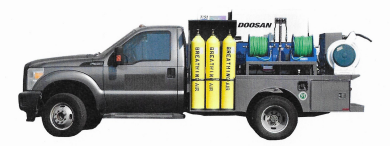
For example, when opening a production line, there is a need to wear SCBA, but since it does not last for more than 30 minutes, other ABS should be available on the work site that can be easily maintained, managed and mobilized inside a facility. However, when the job is off-road, this becomes a challenge. It can be suggested to transport the required ABS to the work site, but when the work is off road, it involves rough terrain and the need for a 4x4 vehicle. In addition, towing is prohibited and an off-road transporting vehicle is limited. Saudi Aramco's solution is to redesign the air compressor truck to have a built-in breathing system.
This system reduces personal and property risk, allows multiple users at the same time, continues with longer working duration, there is no need to carry a heavy gas cylinder, and it is useful at heights. The systems also minimizes vehicle presence, and it offers a source of ignition, more resources and logistics. Cost savings result from no changing empty cylinder, eliminating the need for a truck to transport cylinders only, and the designed system is cheap. The system is used as backup to facilities whenever a major activity is experienced.
VIGILANCE, Frank's International
The Frank's International VIGILANCE surveillance technology tracks equipment as well as personnel movement through a unified real-time system with 10-cm accuracy. This tool is portable and customized to suit any rig environment onshore or offshore. The battery-powered sensors track personnel as well as equipment with respect to the set boundaries established for safe operational movement. The location coordinates for each object are monitored live, and the ability to interfere and/or stop unsafe operations is executed from a single command and control system. In addition, audible and visual alarms and safety interlocks can be established based on different levels of moving or collision hazards in operations.
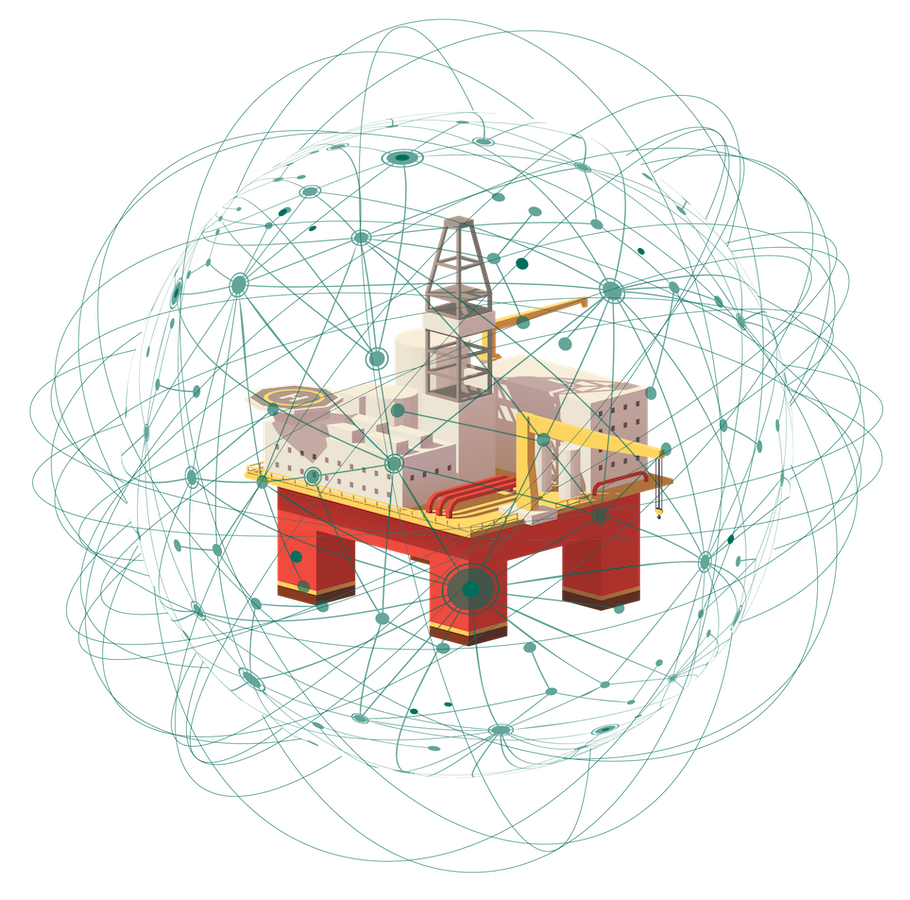
VIGILANCE was run on the field during 2020 to 2021 on an offshore rig in the Asia-Pacific for the casing and completions phase of the well. A total of 275,552 datapoints were captured during an 18-hour continuous run. It was observed that during the pulling out of hole operations, the system has halted operations in approximately 20% of operational time frame where personnel entered the red-zone area. To conclude, the system proved itself with increased safety measures.
Another field operations data in offshore Gulf of Mexico indicated that the system was able to stop the tong system twice during operations when personnel entered the critical area in the red zone with multiple moving equipment, therefore, avoiding a potential incident twice.
Translating this per OSHA’s data, the potential savings of $17,000 per job can be observed by preventing one incident per 100 jobs.
Spontaneous Leak Detection, Siemens Energy, powered by ProFlex Technologies
Siemens Energy and ProFlex Technologies have partnered to provide pipeline operators with spontaneous (i.e., real-time) leak detection as a service. The tool combines ProFlex Technologies’ proven Enhanced Negative Pressure Wave (NPW)-based leak detection with Siemens Energy’s expertise in cloud computing, Internet of Things (IoT) and data analytics to detect the presence of a leak within a pipeline in a matter of seconds and with accuracy in the range of 20 ft to 50 ft. Because it utilizes a subscription-based model, the technology is easily scalable and requires little upfront capex. In addition, it can be deployed on virtually any type of pipeline asset (newbuild or brownfield), including those carrying products, such as oil and gas, produced water, hydrogen or hazardous materials. Specific applications include long-distance transmission lines, production gathering networks at well sites and offshore production risers.
The tool represents a highly accurate and economical means of detecting and localizing very small unplanned product releases in pressurized lines. It overcomes many inherent disadvantages of other leak detection methods used across the industry today, including mass-volume transfer (which often cannot be used for detecting small leaks) and fiber-optic sensing (which is reliable but highly cost-prohibitive). It also uses advanced signal processing to address what has historically been one of the most oft-cited concerns of NPW-based detection: a high rate of false positives. Once ProFlex Technologies’ remote monitoring system identifies a leak, Siemens Energy’s cloud-based IoT system analyzes the leak data in real time, notifying users through mobile devices, laptops or desktop, or SCADA systems. In addition, leak location in the form of latitude and longitude coordinates is presented on a pipeline asset map.
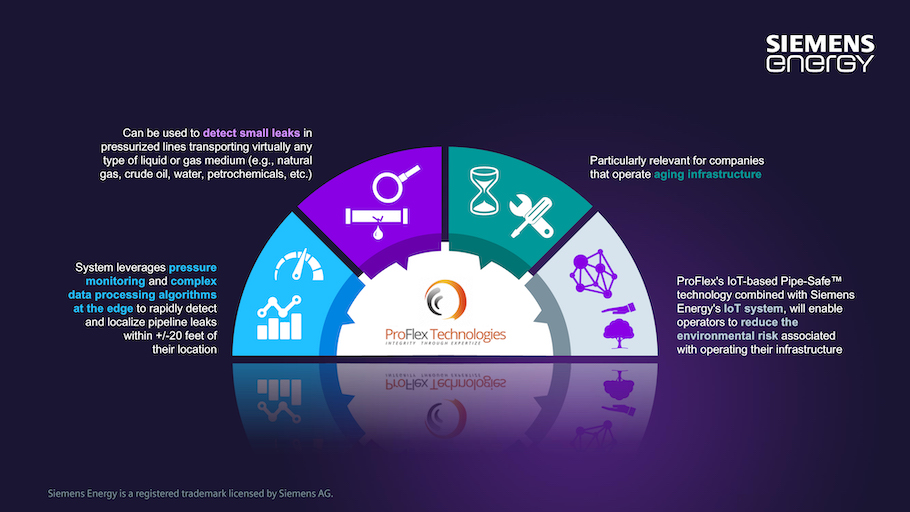
HYDRAULIC FRACTURING/PRESSURE PUMPING CATEGORY:
SPM EdgeX Carbide Seat, SPM Oil & Gas, a Caterpillar company
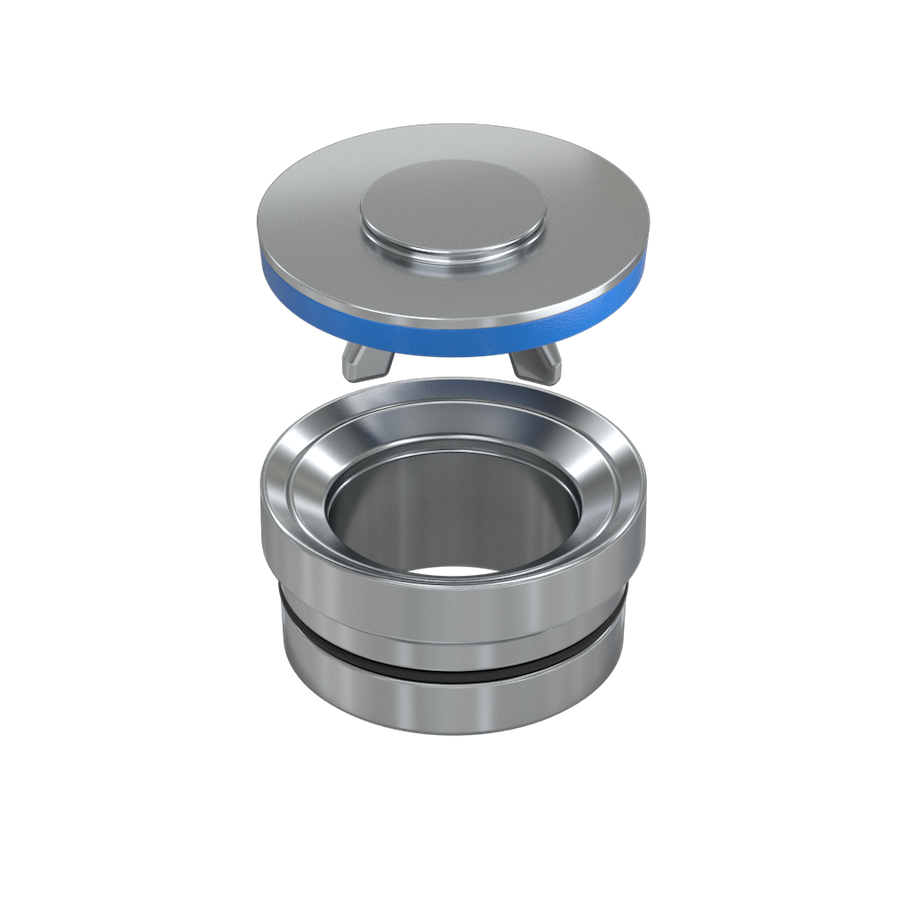
Operators across every North American basin are pushing their frac fleets further than ever with well optimization trending toward large bore/zipper fracs that reduce and eliminate maintenance time between wells and fracs. This has led operators to focus on pump utilization and downtime for pump maintenance. Valves, seats and packing are the most significant maintenance expenses on a frac site, making operators focus on reducing costs related to fluid end maintenance and downtime.
The SPM EdgeX carbide seat redefines frac valve seat life to provide six times greater life than legacy valve seats, even in the harshest conditions. The EdgeX carbide seats strategically employ tungsten carbide in key wear areas to deliver dramatically longer life than existing valve seats, including environments with large particles, which means less time spent pulling seats. Operators experience significant resistance to wear, cracking, shattering, washout and catastrophic failure, as the EdgeX combines the wearability of tungsten carbide with the reliability and impact-resistance of steel. Installation error sensitivity is dramatically reduced with the EdgeX.
The technology also offers operators maximum flexibility, because it is compatible with all makes of valves and standard taper fluid ends and allows for infield removal and reinstallation. The tool offers a 30-degree strike angle for maximum interchangeability and enables a standard seat puller to be used.
IOR/EOR/REMEDIATION CATEGORY:
15K MultiStage Frac System (frac sleeves, RockLock packers, WIV, Alpha Sleeve and liner top), Baker Hughes
The Baker Hughes 15,000 psi-rated multistage completion system provides the ability to overcome many challenges associated with traditional OH fracturing equipment. Capable of providing up to 20 stages with 15,000-psi stimulation pressure, this system comprises a holistic top-to-bottom wellbore solution for these tight formations. The system starts with the ZXTreme HP/HT liner-top packers to provide casing isolation used in conjunction with the ControlSet Flex-Lock V liner hanger. This hanger eliminates the risk for preset through the use of two opposing mirrored cylinders to balance the tool and offers exceptional hanging capacity through debris tolerant optimized circumferential slips. As many as 19 FracPoint EXTREME frac sleeves can be installed to provide individual formation access points. These sleeves offer ball-on-seat ratings and allow the use of dissolvable frac balls, greatly enhancing treatment efficiency and eliminating the need to flow balls back to surface. Each FracPoint EXTREME sleeve is isolated by a set of RockLock 15k open-hole packers. Utilizing Baker Hughes‘s Aptum Seal, these packers offer extreme seal expansion ranges to ensure sealing in challenging open-hole conditions. Additionally, they provide high-torque and circulation capabilities while eliminating the need to install costly open-hole anchors. The robust and reliable Alpha Sleeve provides a pressure-activated port for the lowest completion stage even in the most extreme conditions.
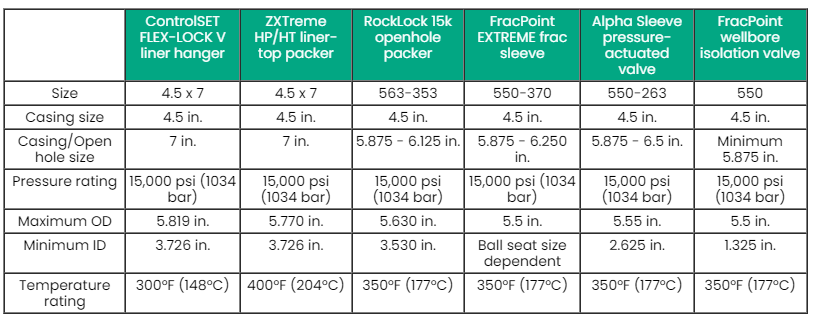
NON-FRACTURING COMPLETIONS CATEGORY:
Sealed Wellbore Pressure Monitoring, Devon Energy Corp. and Well Data Labs Inc.
The Sealed Wellbore Pressure Monitoring (SWPM) process was born through the efforts of innovative completion engineers at Devon Energy. Nearly 10,000 stages have been analyzed with this technique in every major North American and one South American unconventional basin for about 20 operators. This technique utilizes a sealed wellbore (filled with low compressibility fluid) to act like an underground antenna. As hydraulic fractures interact with the sealed wellbore, there are discernable pressure changes that can be picked up from within, providing valuable data.
Proper SWPM execution requires establishing a closed system without perforations connected to the formation being stimulated, along with a sealed casing. With this, a surface or downhole gauge can collect and transmit the necessary data to evaluate interactions with treatment wells that are actively being completed. The primary aim of all fracture diagnostics is to optimize for cluster efficiency. Variations that occur along a lateral can be influenced by any number of constantly changing factors. This, in turn, has repercussions for drainage patterns and the very economics of the well. This is why operators are willing to pay up to and sometimes more than $1 million for certain types of diagnostics within a single project. SWPM has proven to be a valuable, flexible tool for the oilfield over the past year.
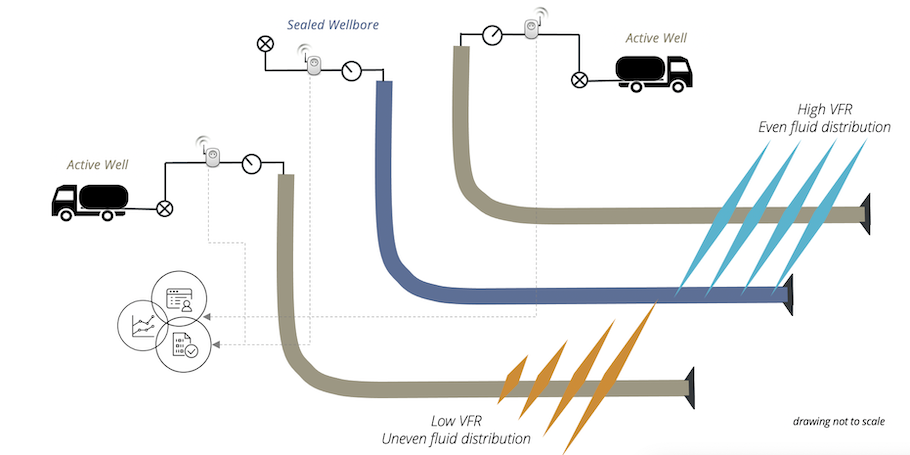
ONSHORE RIGS CATEGORY:
High-Temperature Variable-Bore Rams, Schlumberger
High-temperature variable bore rams (VBR) provide a seal to a range of diameters. They are suited for H2S service per NACE MR0175 and compatible with Schlumberger's U surface ram-type BOP. The ram packers lock into place and are not dislodged by well flow. Additionally, a large reservoir of packer rubber ensures a long-lasting seal under all conditions and increased range of operating temperatures. The VBR has uniquely designed inserts enabling it to withstand extreme heat for challenging well sites. This ram is for the 13⅝-inch 3,000-psi through 10,000-psi Type U ram BOP.
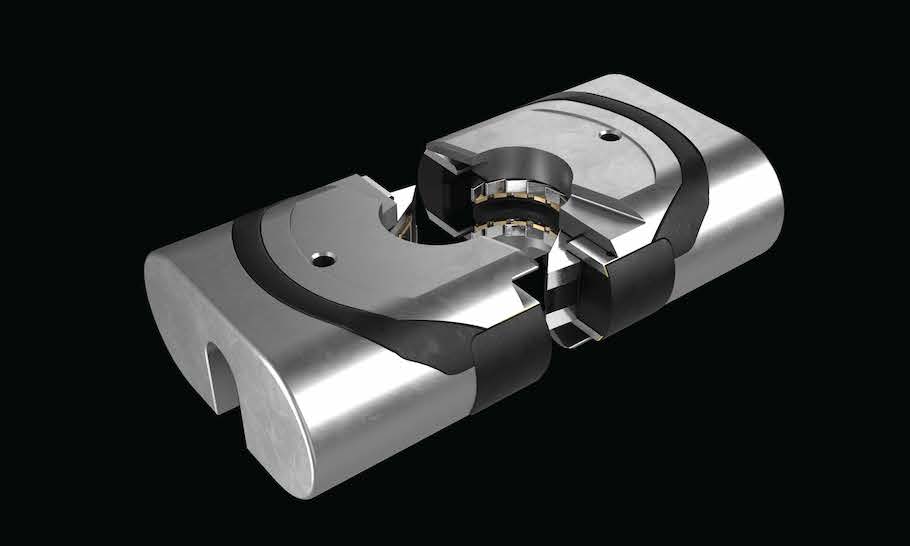
During qualification, the high-temperature VBR surpassed the minimum API extreme temperature hold of 1 hour. This translates into having more time to make informed decisions during a well control event while pressure is stabilizing. A new elastomer material with improved performance capability at extreme temperature is crucial. The VBR primary insert geometry was also modified, and secondary inserts were added to prevent extrusion of the elastomer during use. The VBR is qualified to meet API 16A 4th edition PR2 criteria for VBRs on 3½-inch to 5½-inch mandrels. The high-temperature VBR achieved an 8-h 300 F extreme temperature hold on a 5½-inch mandrel, and an 11-h 300 F extreme temperature hold on a 3½-inch mandrel. Although the design was driven by high-temperature requirements, the VBR also performed well at a low temperature of 30 F. It passed all aspects of API 16A 4th edition PR2 criteria, including continuous high-temperature testing to 180 F, sealing characteristics, stripping, hangoff to 150,000 lbf with a 3½-inch mandrel, hangoff to 450,000 lbf with a 5½-inch mandrel, and completed 78 fatigue cycles, which exceeded API requirements by 50 cycles.
SUBSEA SYSTEMS CATEGORY:
Residency Buoyancy, Trelleborg Applied Technologies
The published information and research conducted by Trelleborg’s applied technologies operation in Rochdale, U.K., shows that an RROV/MSV engineered using existing syntactic materials offers a durability of approximately six months. This brings a new challenge to materials scientists and engineers to develop innovative syntactic materials that offer serviceability well beyond six months to support the needs of the industry. Recognizing these new requirements for long-term submersion, Trelleborg’s applied technologies operation undertook a program of development, testing and qualification of syntactic foam materials to address the specific and more demanding needs in RROV/MSV applications, aiming to ensure robust and reliable performance.
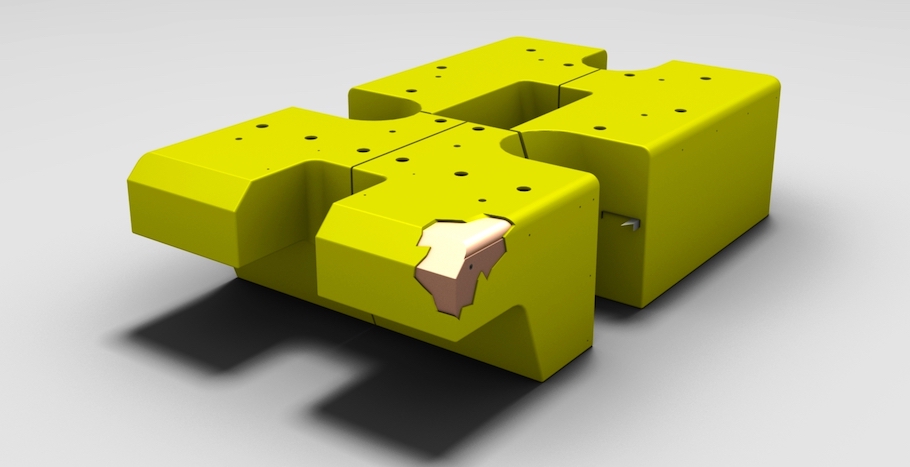
Trelleborg has released an extensive testing program on its TG range of materials utilizing cube and cylinder specimens with different surface to volume (S/V) ratios. For this purpose, TG3000R syntactic foam material was chosen, undergoing accelerated aging at +50 C under hydrostatic pressure of 310 bar, the pressure at operational depth of 3,100 MSW, until the material reached 2% water absorption; the failure index value. These data were used to build a model for service lifetime prediction. Validation experiments were set to run in parallel with the accelerated aging, with data used to predict the service lifetime based on Arrhenius model. The output of the model using the water absorption data at +50 C predicts a greatly increased service lifetime of two years at +10 C, as opposed to the current six months durability available. Following this discovery, a systematic approach was adopted by Trelleborg to identify other potentially suitable syntactic foam materials. Derived from a combination of thermoset polymer matrices and high-strength hollow glass microsphere technology (HGMS), TG1000R, TG2000R, TG3000R, TG6000R with depth ratings of 1,000, 2,000, 3,000 and 6,000 MSW, respectively, all underwent stringent testing and qualification processes.
TCP Riser, Strohm
Strohm has been at the forefront of thermoplastic composite pipe (TCP) technology for SURF applications. Recently, Strohm developed the concept of the TCP Riser for deepwater application—probably the most disruptive, high-end product developed for deepwater and corrosive environments, according to the company. The TCP Riser is designed and developed specifically for the challenging presalt conditions in Brazil. There, crude oil and natural gas contain various corrosive contaminants such as CO2 and H2S, which, especially when dissolved in water, create an extremely corrosive mixture. The high concentration of CO2 is thought to accelerate corrosion ultimately leading to failure of steel-based flexible pipes, a phenomenon commonly known as stress corrosion cracking.

The full, solid wall TCP Riser takes corrosion completely out of the equation by removing the steel tensile armor layers and replacing them with a carbon fibre based composite. The design of the TCP Riser includes an inner liner, a carbon fiber-based composite layer, a coating and a weight stabilizing coating. The liner, matrix and coatings are based on the PVDF polymer, proven in the oilfield for many years of service life. All layers are melt-fused together to form a solid wall, while still being spoolable in long lengths by virtue of using one polymer in all layers. The carbon fiber is completely insensitive to CO2, H2S and has a superior fatigue performance. The product has been developed in close collaboration with the end users and Strohm's supply chain partners. The company has taken the end client’s preferences for installation method and subsea configuration as starting point for product and material development. This has led to a TCP Riser product that does not corrode, fatigue and has a superior service life of 30 years; can be installed using currently available installation vessels, with only modest modifications; uses the most cost-effective free hanging catenary configuration, without any requirement for buoyancy elements and requiring only two sections of pipe; and has the smallest carbon footprint The TCP Riser is based on the field-proven TCP technology.
WATER MANAGEMENT CATEGORY:
Flow-Sync Water Management Platform, Flow-Sync and Bedrock Automation
Flow-Sync has developed skid-based automation technology that has been proven to improve water management productivity by more than 50%. To use it, operators open Flow-Sync’s Transfer Calc software, which analyzes transfer line hydraulics to model the number of pumps required to satisfy the design flow rate and route topography. On startup, the software reconciles readings from pressure sensors, level sensors and flowmeters to identify equipment problems that could cause downtime and sends readings to a programmable control system that optimizes flow based on the data.
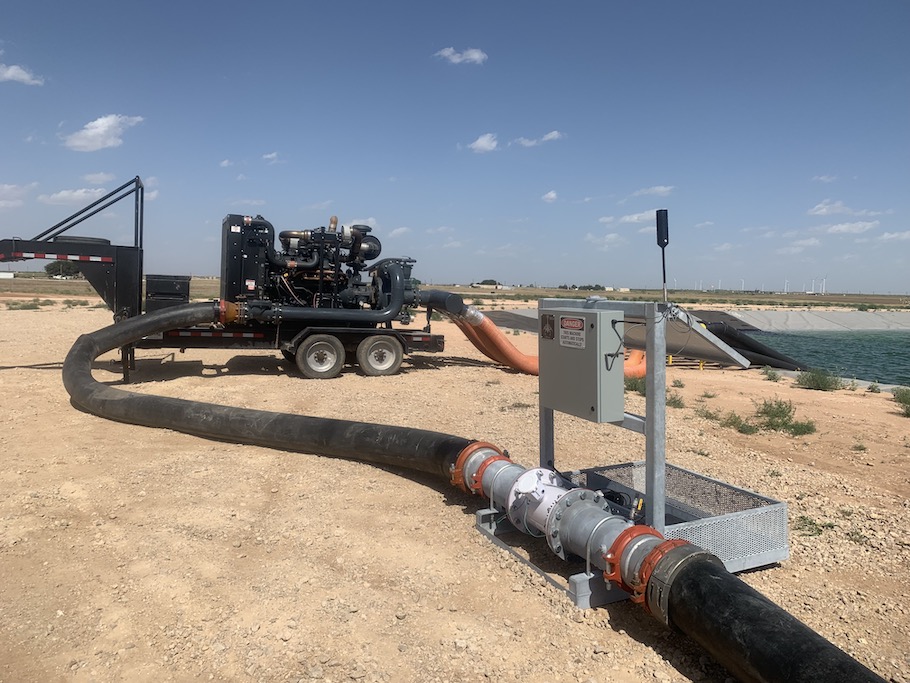
To ensure that the controls have adequate bandwidth to handle the complex pump control calculations securely, Flow-Sync has deployed PLC functionality from a Bedrock Open Secure Automation (OSA) Remote industrial control system. The OSA Remote system leverages the economies of open technologies and eliminates vulnerability to cyberattacks. It is also housed in a rugged, all metal enclosure that withstands the extreme conditions of a typical fracturing environment and mobile nature of the equipment. Flow-Sync deploys the OSA Remote modules in the wiring cabinet of patented, self-contained, portable skids. The skids connect easily to the pumps so the entire transfer operation can be effectively monitored and controlled from any location with an internet connection. The OSA Remote with universal IO is configured to read and write tags from the skid’s sensors and its OPC UA capability makes it very efficient to communicate these data to the broader system.
Enabling users to interact with the automation system is Ignition SCADA software from Inductive Automation. The Ignition server integrates with the Bedrock controls and the AWS cloud, where Amazon Elastic Compute Cloud EC2 servers host an SQL database. The architecture is fully scalable in terms of processor memory and disk storage. The OPC UA connection with the Bedrock OSA Remote extends the secure PLC architecture to remote locations via TCP/IP.
An entry form for the 2022 MEAs competition will be available at HartEnergy.com/mea starting Nov. 1, 2021, until July 1, 2022.
Recommended Reading
Report: Freeport LNG Hits Sixth Day of Dwindling Gas Consumption
2024-04-17 - With Freeport LNG operating at a fraction of its full capacity, natural gas futures have fallen following a short rally the week before.
Permian NatGas Hits 15-month Low as Negative Prices Linger
2024-04-16 - Prices at the Waha Hub in West Texas closed at negative $2.99/MMBtu on April 15, its lowest since December 2022.
BP Starts Oil Production at New Offshore Platform in Azerbaijan
2024-04-16 - Azeri Central East offshore platform is the seventh oil platform installed in the Azeri-Chirag-Gunashli field in the Caspian Sea.
US Could Release More SPR Oil to Keep Gas Prices Low, Senior White House Adviser Says
2024-04-16 - White House senior adviser John Podesta stopped short of saying there would be a release from the Strategic Petroleum Reserve any time soon at an industry conference on April 16.
Core Scientific to Expand its Texas Bitcoin Mining Center
2024-04-16 - Core Scientific said its Denton, Texas, data center currently operates 125 megawatts of bitcoin mining with total contracted power of approximately 300 MW.


